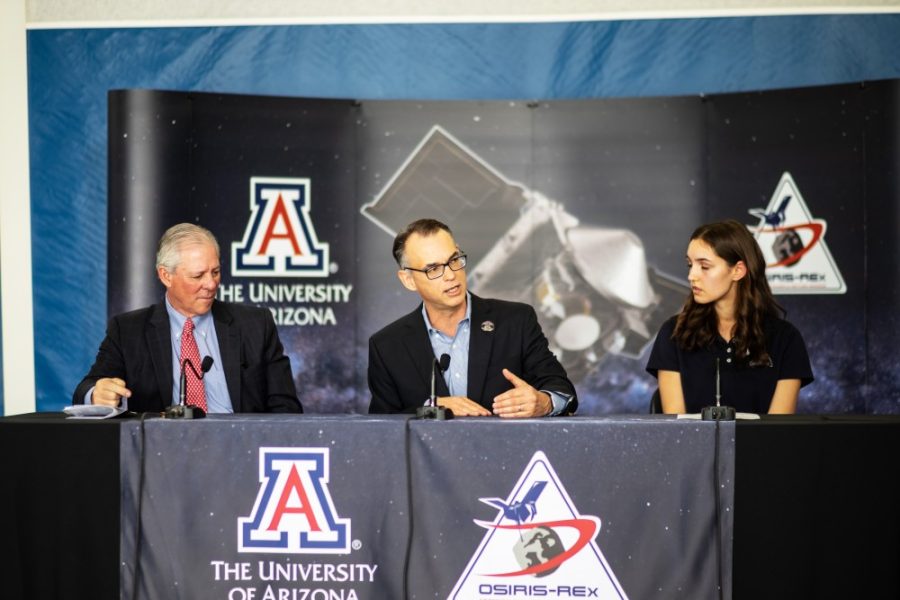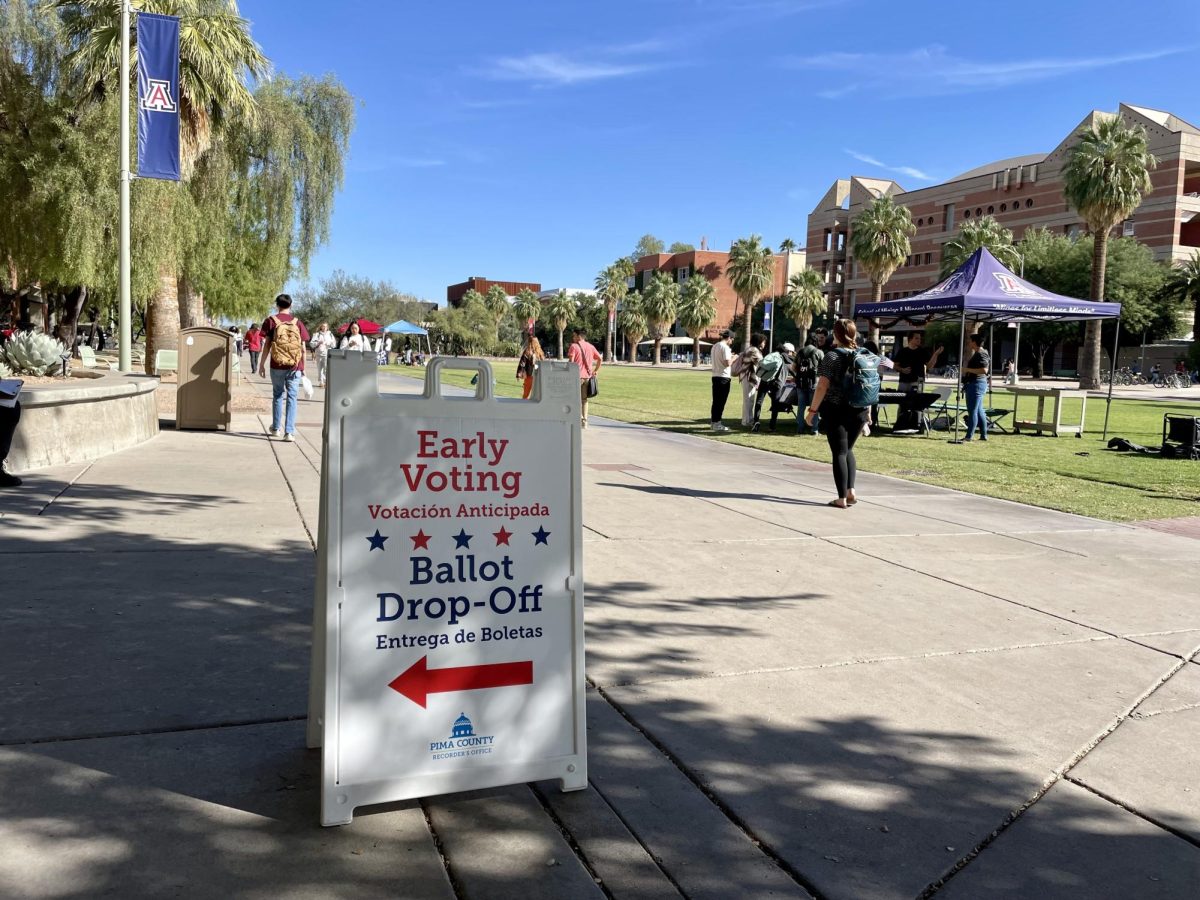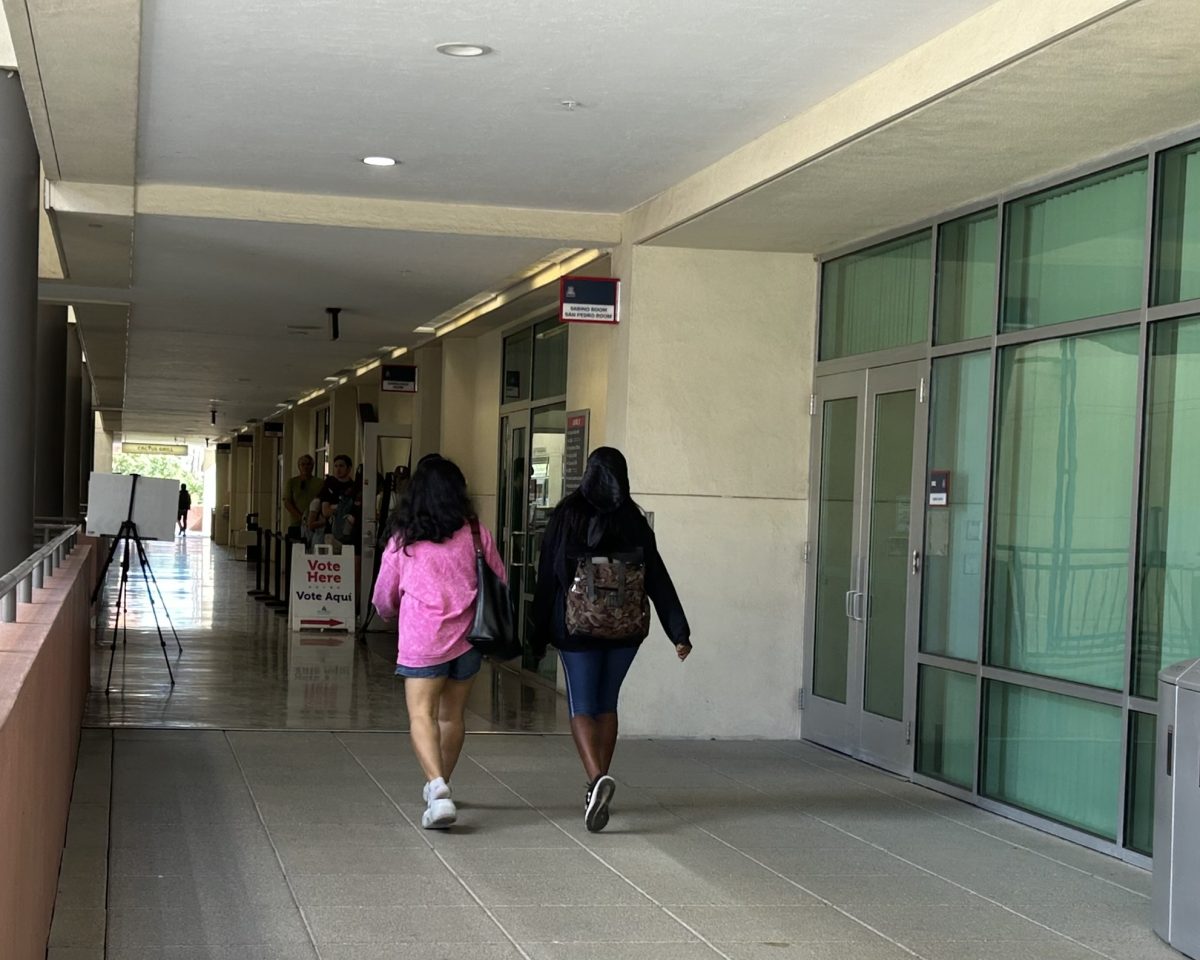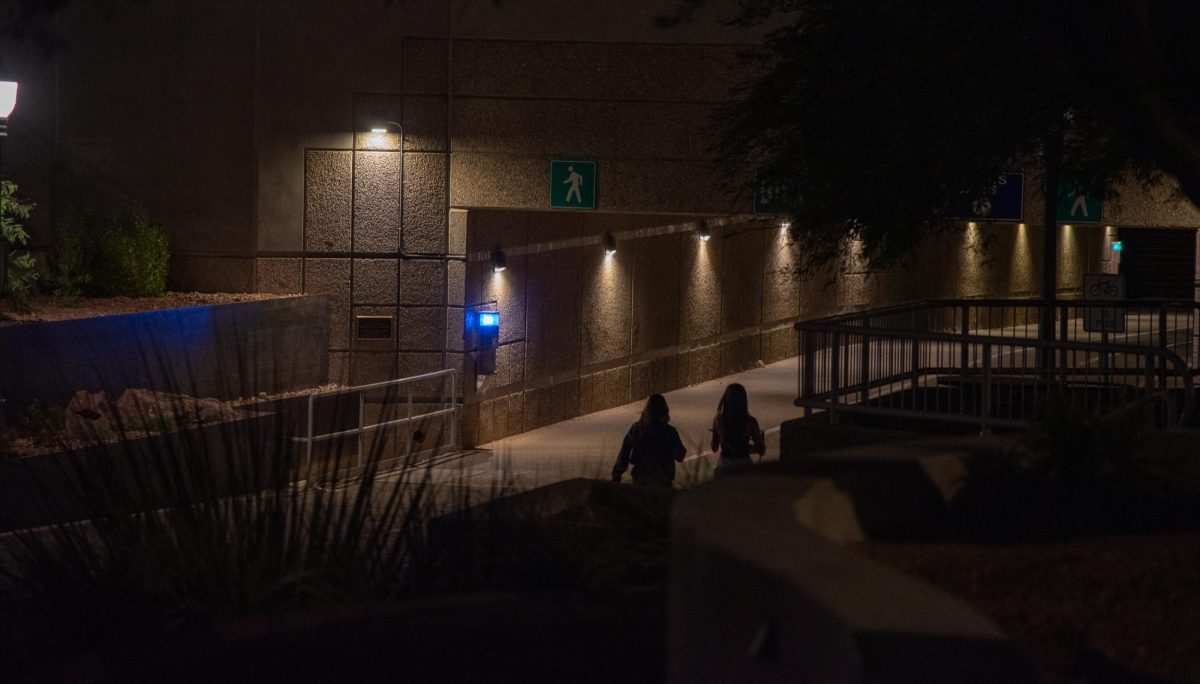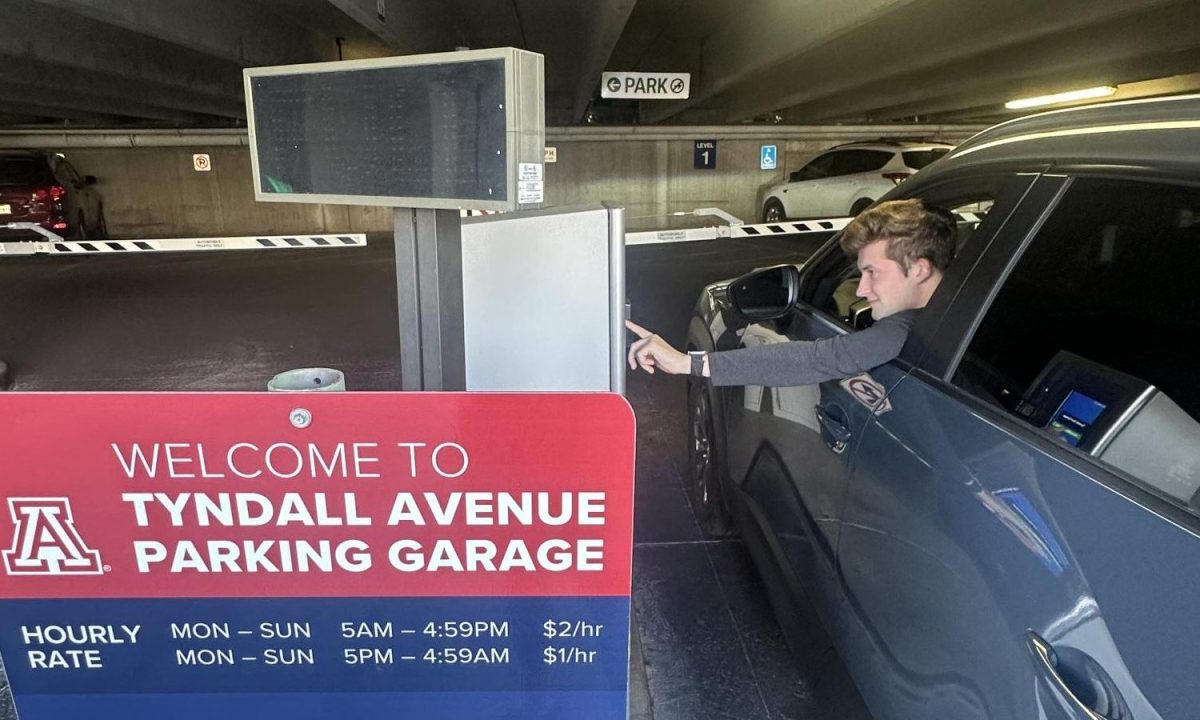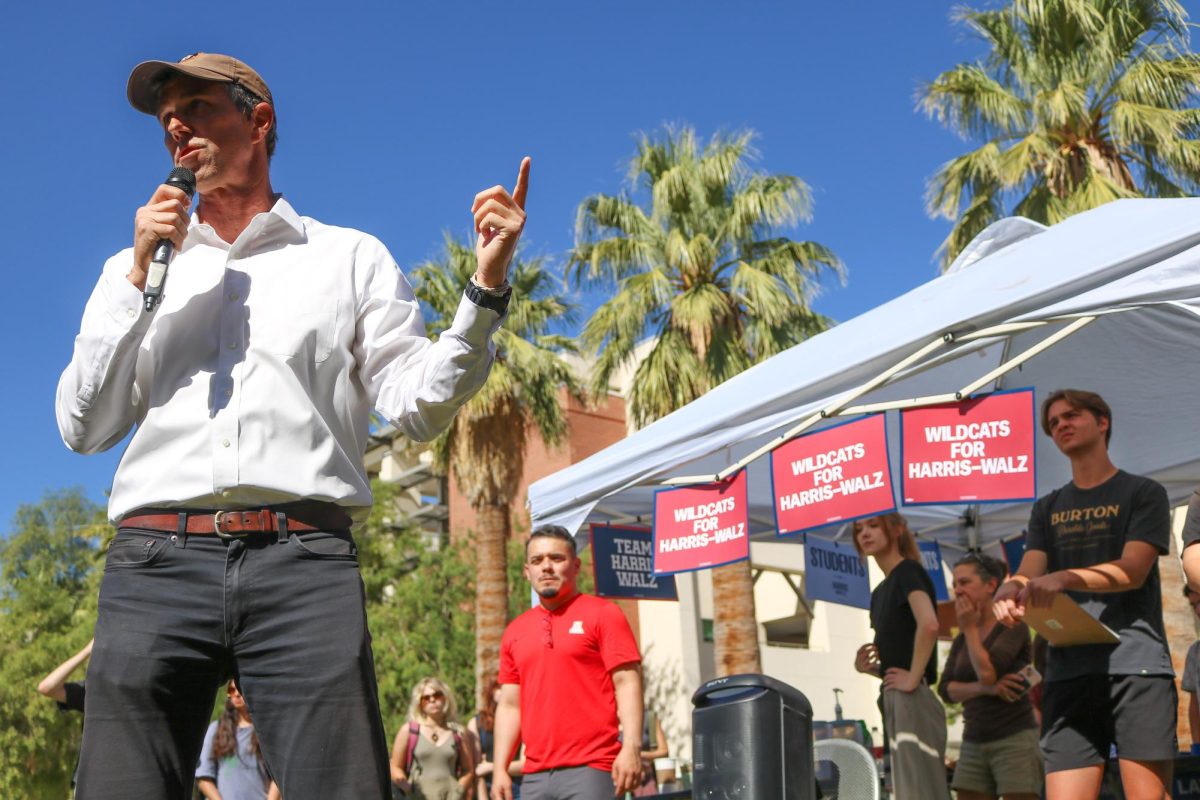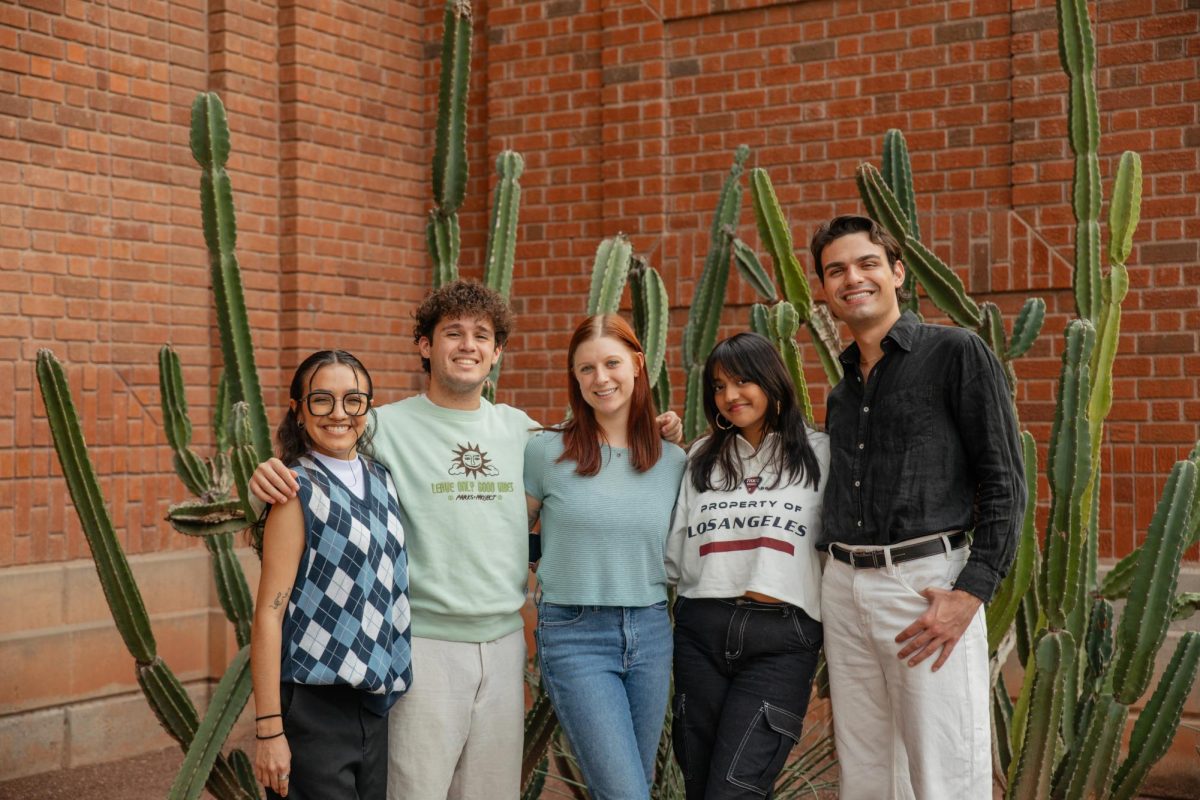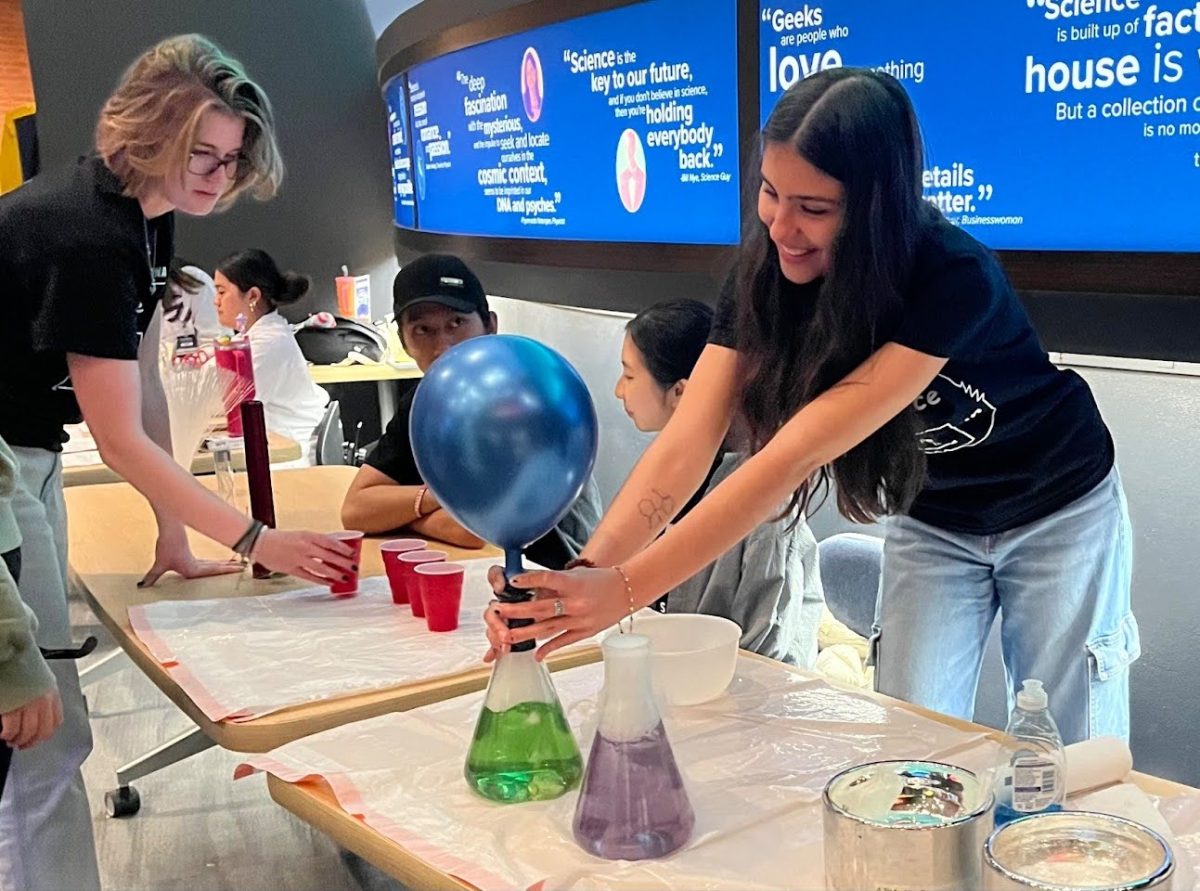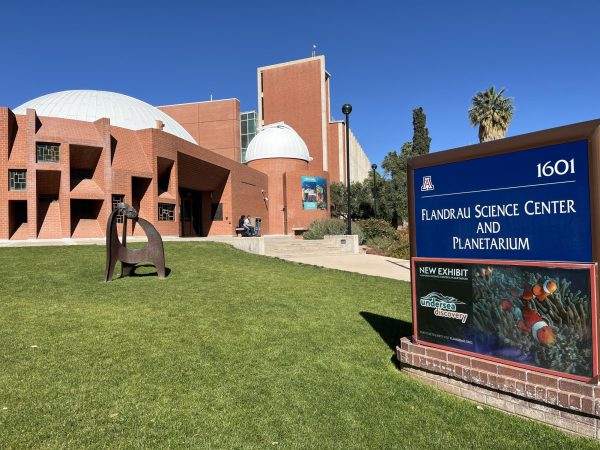OSIRIS-REx executed an arrival burn on Monday, Dec. 3, after two years of space travel. It took seven minutes for the signal to travel back to Earth to find out if the burn was executed correctly.
University of Arizona officials and scientists waited for the signal and celebrated the achievement at the Stevie Eller Dance Theatre on Monday morning.
The purpose of the mission is to answer one of the biggest scientific questions: What are asteroids made of? The spacecraft’s goal is to obtain material from the surface of asteroid Bennu and bring it back to Earth for scientists to study.
Dante Lauretta, the principal investigator on the mission and UA professor of planetary science and cosmochemistry, gave a speech before the arrival.
“Today really marks the beginning of the great adventure that is exploration of asteroid Bennu,” Lauretta said.
History of the mission
“We’ve been part of the space exploration since the dawn of the space age,” Lauretta said, referring to past NASA collaborations.
RELATED: One small step, no small feat: UA’s long history with NASA
This is the largest project that the UA has ever done with NASA.
Dr. Robert C. Robbins, the UA president, said, “I think it’s the great value and power of a large research university to help to answer these questions and discover new knowledge.”
Timothy Swindle, director of the Lunar and Planetary Laboratory, said, “we have proven that we can run a mission of this size. NASA has said that this is one of the better-run missions that we’ve had.” This gives the UA a better chance of getting similar missions in the future.
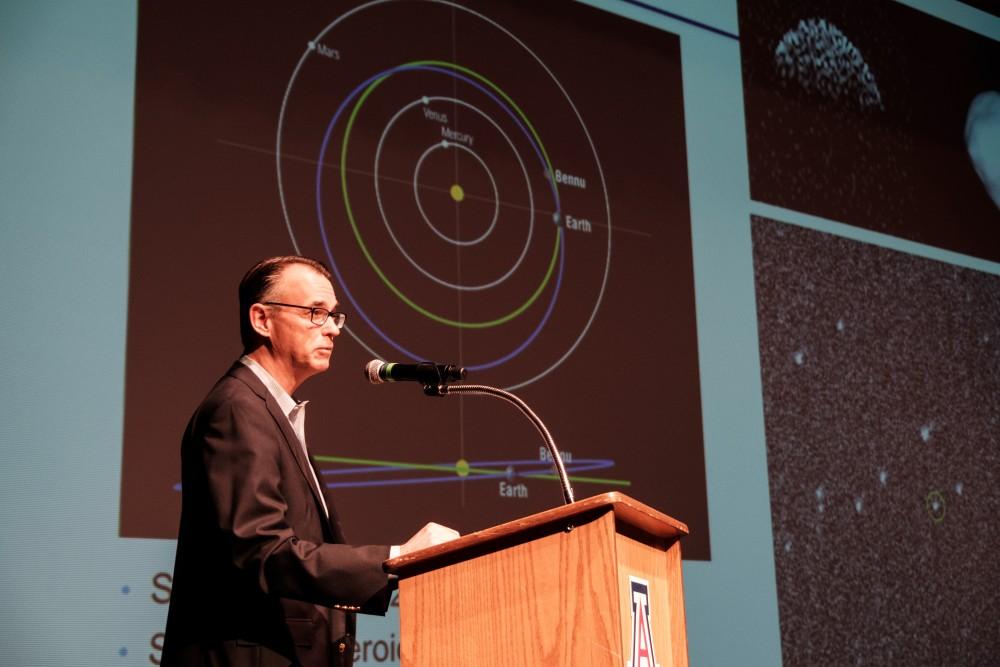
According to Erin Morton, the project’s communications lead, Lockheed Martin Space Systems, a global security and aerospace company, developed and is flying the spacecraft. They partnered with the UA and spent seven years developing a proposal. NASA approved the mission, making UA the principle investigator and leader of the mission. NASA Goddard Space Flight Center is in charge of mission assurance and systems engineering for the mission.
The OSIRIS-REx mission will cost $1 billion total, because the mission takes place over a 15-year period. Work started on the design and building of the spacecraft in 2011, finished in 2015,the craft was tested and launched in 2016, and it has been flying in space ever since.
“We have not been able to see Bennu clearly from Earth,” Morton said. “We had a general sense of what it looked like, but we didn’t know for sure. In the last two months, we have been able to see Bennu better than we ever have before. We have actually watched while it has taken shape as a little world that’s complete and distinct on its own.”
“Now that we know what it looks like, the next big question is what it’s going to be like when we try to get the sample,” Morton said.
“We’ve got a lot of work left to do. Getting there is just the start,” Swindle said.
Results
OSIRIS-REx still need to spend 18 more months mapping out Bennu before finally collecting a sample from its surface. Then, after a six month repositioning period, the spacecraft will travel back home for two more years, landing in the Utah desert in Sept. 2023. The samples and data will be analyzed over the next two years.
According to Morton, 25 percent of the samples will be studied by the UA, NASA and other researchers. The other 75 percent will be stored in the NASA Johnson Space Center.
“Years from now, decades from now, generations from now, people can request and study pieces of the asteroid,” Morton said. NASA wanted to make sure that the samples are around for when we have more questions or more advanced technology.
Keara Burke, an image processing intern on the mission and a senior majoring in systems engineering and math, said, “for most of the time we’ve been on the mission, we’ve been waiting for OSIRIS-REx to get to the asteroid, so now it’s exciting, because we’re actually getting to do these things that we’ve been talking about.”
RELATED: One year after launch, OSIRIS-REx flies by Earth
While researchers want to know what asteroids are made of, they also want to see if the data lead to any information on the formation of life. Materials that were present when the Earth was formed and life began might be found, because asteroids are remnants of the early Solar System.
“We are hoping to obtain information on the origins of the Solar System and, potentially, life itself,” Burke said.
Students: the next generation of scientists
You may be asking, why have a bunch of students work on such a big project?
“One of the reasons why NASA picked the University of Arizona to run this mission is because we were going to bring on students at every level,” Morton said. They have undergraduate, graduate and postdoctoral students involved.
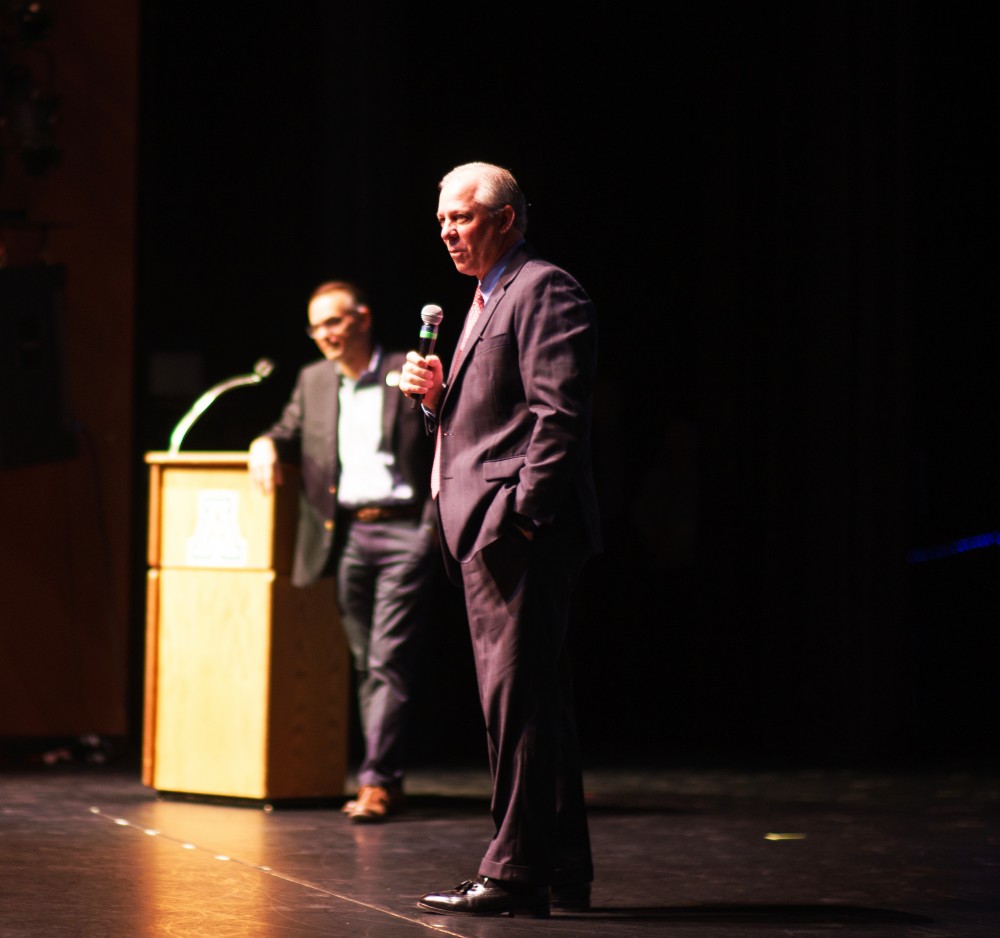
According to Swindle, the UA has over 150 students working on not just engineering, but graphic design, engineering and accounting, all of which are important.
“I like the idea of an undergraduate cutting their teeth, building a piece of spacecraft that has one chance to work, and they know it has one chance to work. When they go out to find and find a job somewhere else, having that experience I think really does make a difference,” Swindle said.
Burke expressed gratitude for the opportunity.
“The reason is providing an opportunity to students like me to learn how to be scientists and being a part of things larger than ourselves. It’s a way to train the next generation of scientists,” Burke said. “Working on this mission has been the most life-changing event that’s happened to me so far. This is where I’ve learned most of the skills I have. It’s incredible to be able to go to work every day and know that what I’m contributing matters.”



